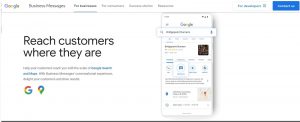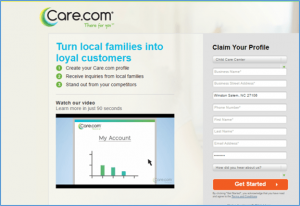“Any lack of creativity is simply a lack of curiosity.”
— Erik Wahl, Artist and Bestselling Author of Unthink
Creativity is your business advantage and your human advantage. Computer algorithms can do many things but being really creative isn’t one of them. So how can you increase your creativity advantage so you can stay relevant in your job and industry?
To find out, I reached out to ten people who found success creating and generating ideas for a living. These creativity experts found success at Pixar, Sony Pictures, and Disney. They hosted popular podcasts, performed improv comedy, and created disruptive innovations in terms of artificial intelligence and virtual voice assistants. In short, they knew how to come up with good ideas.
Be curious.
Boost your creativity with curiosity. Kevin Surace, who helped develop the first cellular smartphone (AirCommunicator) and the first digital assistant (Mary), explained: “To be creative, we have to be curious. Curiosity drives innovation. True innovation occurs because we are curious about solving real pain points for potential customers. When we are curious about their pain point and the solution, we can get creative and in time, address the pain.”
Revel in uncertainty.
We have to become comfortable with not knowing all the answers in order to find new solutions. Peter Guber, former CEO of Sony Pictures explained, “The birthplace of creativity is in the ‘not knowing’ and reveling in that uncertainty. True creativity comes when you are comfortable with that space and when you trust your inner guide.”
Don’t follow the rules.
New ideas often break or challenge existing conventions. Jay Ward, a Creative Director at Pixar, explained: “Creativity in business is something you can’t manufacture, you can only foster it. It happens when minds are allowed to imagine freely, without letting negativity or rules tamper it down. If you start with the “We can’t because…” or “That’s a bad idea because…” then you’ll never allow what’s possible.”
Go the other direction.
Sometimes the way to creativity is to look at what everyone else is doing and then go in the opposite direction. If everyone is putting on bells and whistles, then simplify. Dean McFlicker, director of television marketing at NBCUniversal, explained his approach: “One approach is what I call The da Vinci Method, where simplicity is the ultimate sophistication. Imagine the simplest, most minimal message or image you can express about your business. Maybe a florist’s ad that shows one beautiful rose in the middle of a barren landscape. Or a CPA ad with a checkmark by the words “Taxes. Done. Right.” Creatively, if everyone is screaming, the best way to be heard is with a whisper.”
Make slight adjustments to existing ideas.
You don’t need to come up with unique ideas to have a novel solution. Sometimes you only need to make minor adjustments to existing ideas. Jeff DeGraff, co-author of The Creative Mindset, explained: “The most game-changing innovations in all domains of our world are minor, incremental, simple…They don’t completely reimagine the game or start totally anew. Instead, they make slight adjustments or modifications to existing things that have surprisingly far-reaching implications. They think big by working small.” For example, Airbnb did not invent hotels. Instead, they adjusted the idea to make anyone’s home a hotel.
Try out as many ideas as possible.
Success or failure rarely rests on one idea. You have to generate many ideas and test them to find one solution that will work. Matthew Luhn, a former Pixar Story Artist and Animator who generated ideas on Toy Story, Up, and Ratatouille explained: “Just as a company must test a new product a thousand times until they get it right, the same goes with new ideas and solutions…It takes a few (or thousand) bad ideas before you strike gold!”
Toggle between wonder and rigor.
Remember creativity is a process, not a destination. Problem-solving for business involves both inspiration and concentration. Natalie Nixon, creativity thought leader and CEO of Figure 8 Thinking explained: “Creativity is a productivity play. I define creativity as our ability to toggle between wonder and rigor to solve problems. It is the essential competency in this 4th Industrial Revolution.”
Reframe the challenge.
Sometimes the key to finding a new solution is to reframe the challenge. Former Disney executive Duncan Wardle, explained how they solved problems at Disney. “How did we turn ‘impossible’ to ‘I’m possible!’? Simply by reframing the question.” For example, when Disney was trying to generate more revenue for its theme park, the executives didn’t ask, ‘How can we make people pay more?’ Instead, they asked: ‘What is the biggest barrier to enjoying the theme park experience?’ They discovered it was waiting in lines. So Disney created a system for people to choose times for rides, cutting out the wait, improving the customer experience, and in the process gave guests more time to spend money on concessions and merchandise.
Find a new environment.
If you have problems generating ideas where you are, find a new place to stimulate your brain. Sometimes finding a new environment is the key. Andy Eninger and John Loos, former Second City comedy writers and who run the Pinquelton Group learning and development company, explained: “Creativity is the opposite of stagnation. It is movement: out of your comfort zone, out of old paradigms, into the exciting unknown. If you’re stuck, move. Find a new environment. Sit in a different chair, leverage a new resource, stretch your limbs, shake out the fatigue. We promise you’ll begin to uncover new ideas and unexpected solutions that you wouldn’t have if you had given in to inertia.”
Give people time and opportunity.
People can’t create if they are always subject to deadlines. Allow them time to experiment. Srinivas Rao, host of the podcast The Unmistakable Creative and author of the ebook The ROI of Creativity at Work, explained: “In order to arrive at innovative and highly profitable expressions of creativity, organizations must encourage their employees to create. They must be ok knowing some of these efforts will lead nowhere. That’s ok. Because in the process, people will become much more creative thinkers. This could lead to many other breakthroughs down the road.”
Business & Finance Articles on Business 2 Community
(11)








